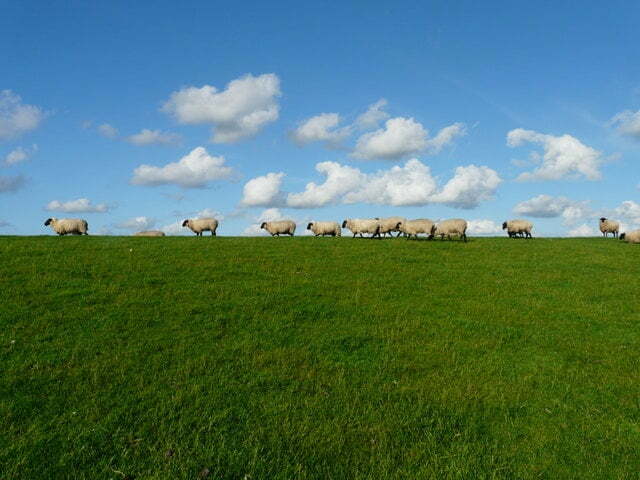I hope this post will make sense. It’s something I thought of in the small hours of the morning when I couldn’t sleep, and started counting complementary hexagrams instead of sheep (as you do…) –
Here’s a picture of the Sequence of Hexagrams:
![]()
Hm… maybe that could do with some explanation:
- Each complementary pair (including the ones that are inverse pairs as well) is represented with ( ).
- Every other pair is represented by an arrow: facing forward if that pair’s complement is ahead of it in the Sequence, facing backward if it’s behind it. You can think of it as which way the hexagrams are ‘looking’ to find the patterns that complement them.
- The curly brackets don’t represent hexagrams – they just enclose groups of hexagrams that are one another’s complements. The big, orange brackets enclose the Vessel Casting group, 3-50; the others enclose hexagrams 7-16, 37-40 and 51-60. (I could have added more brackets around 51-64, but I thought we’d got enough to be going on with.) If you’re a Change Circle member, you may already be aware of a lot of very lovely – and very meaningful – patterns and reflections created inside those curly brackets that I described in the Exploring the Sequence book last year.
- The little blue letters identify some interesting moments.
Now of course, you’d expect more of the hexagrams in the first half of the book to be looking forward to find their complements, and most of those in the second half to be looking back. The fun starts when you look at the exceptions: the moments when the expected flow forward or backward changes direction.
At ‘a’, you get the first hexagrams to look back to find their complement. Since we entered the Vessel Casting set, each pair has been looking forward – until you reach Hexagram 12, Blocked:
![]()
That turns us around to look back. I’ve written about this structure, and the historical moment I think it encodes, in Exploring the Sequence – but even without that level of detail, isn’t it interesting that Hexagram 12 should be the one to compel us to look back?
We start looking forward again at ‘b’. That’s Hexagram 19, Nearing:
![]()
We go past the complementary pairs at the end of the Upper Canon – 27/28, 29/30 – and into the Lower Canon, where (at ‘c’) we find the first backward-looking arrow for a while – at Hexagram 33, Retreat,
![]()
…which as you see is the complement of 19. 19 is about going forward, and 33 is about going back. (Also, from hexagrams 19/20 to 33/34 inclusive makes eight pairs. ‘Arrival at the eighth month…’?)
The letter ‘d’ marks a unique moment, when complementary/opposite hexagrams are adjacent in the Sequence without being part of a complementary pair. By this point it might not surprise you that this moment’s marked with Hexagram 38, Opposing.
As you can see from the arrows, this is another moment of changing direction. Travelling south and west instead of north and east, perhaps. Coming instead of going, as you might say: turning around.
‘Above the mountain, there is water. Limping.
Noble one turns himself around to renew his character.’(Hexagram 39, the Image)
From then until the end of the Vessel Casting pattern at Hexagram 50, every pair is ‘coming back’. It takes a full-size Shock to flip us around again and make us look forward.
Really, you might think someone had done this on purpose.
Once you start looking at where individual pairs find their complements, there’s more to see. For instance, the greatest distance between two complementary pairs is that between 3 and 50: it takes a long time to complete a Vessel. The second greatest distance begins with Hexagram 5, which has to Wait until Hexagram 35 for its complement. (Oddly enough, 3/4, 5/6, 35/36 and 49/50 are eight of the twelve ‘Steps of Change’ reached by changing single lines in 63/64, at the very end. The remaining four are 37/38 and 39/40, the closest complements.)
(And isn’t the third-biggest distance between 21, Biting Through, and 48, the Well, two hexagrams about closing or bridging a gap?)
(Add your own parentheses ad lib; there is so much to this book that we haven’t yet seen. I can’t recommend it as a soporific, though.)










Maybe i haven’t been paying proper attention up to now, but these two essays have been quite extraordinary. Thank you!
Thank you!